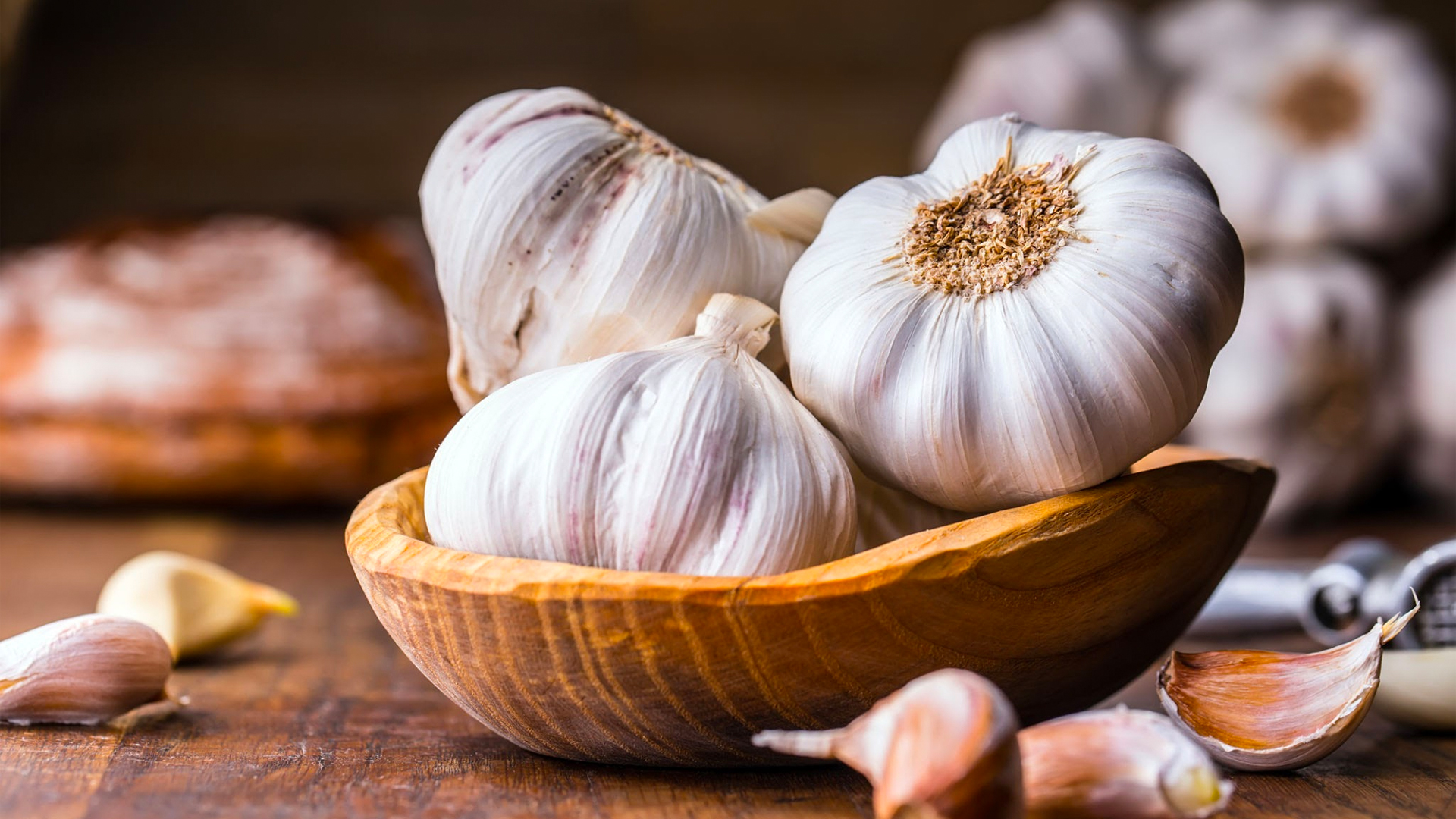Garlic has long been associated with Italian cuisine, but there are a few dishes that wouldn’t exist without the pungent bulb. While garlic did arrive in the United States along with immigrants from Southern Italy, garlic’s impact on Italian cuisine is felt throughout the peninsula. Here are some dishes that would be unimaginable without garlic:
Aglio e Olio
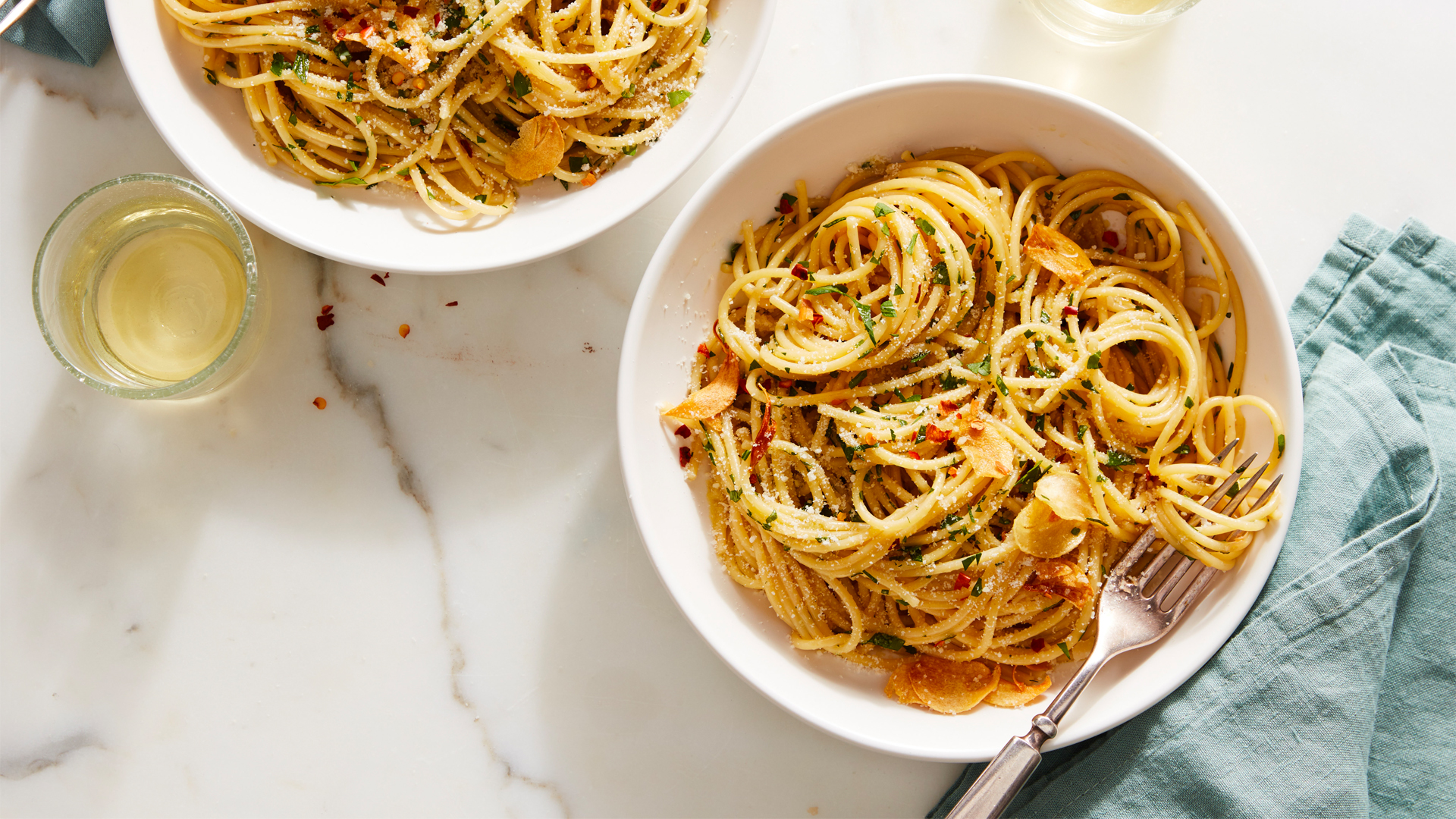
One of the most basic pasta dishes, “aglio e olio” literally means garlic and oil. The most common pasta served with this "sauce" is spaghetti or linguine. The garlic is first lightly sautéd, and then the cooked pasta is simply tossed in the oil and garlic. Despite the basic name, other ingredients can include crushed red pepper flakes and freshly chopped parsley. Of course, without garlic, the dish would be simply spaghetti con olio.
Garlic Bread
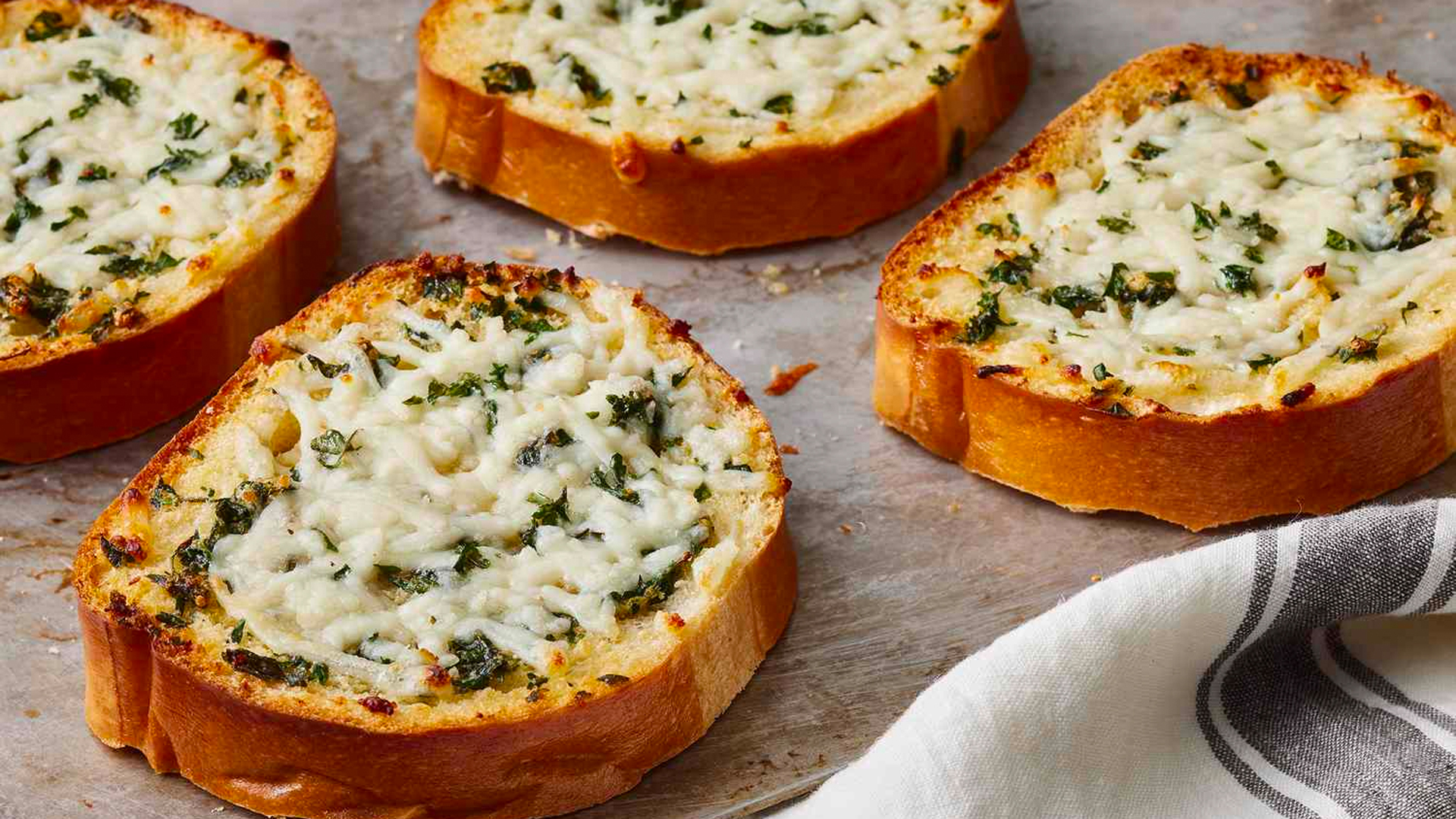
Olive Garden might have built an empire on garlic bread sticks, but the fast casual chain didn't invent it. What Americans call garlic bread is actually just a variation of bruschetta (make sure to pronounce correctly), and one that existed long before the arrival of the tomato. While tomato bruschetta has grown in popularity in the last few decades, a more traditional version made from garlic and olive oil is hundreds of years old and dates to Renaissance era Italy. Italian Americans took this all one step further and started adding things like mozzarella cheese or Parmigiana Reggiano before toasting the bread. Another variation invented in the United States is the garlic knot. These reinterpretations of garlic bread first started appearing in pizzerias in the 1980s. Pizzaiolos would wrap olive oil and garlic in a tight knot shape and bake.
Pesto Genovese
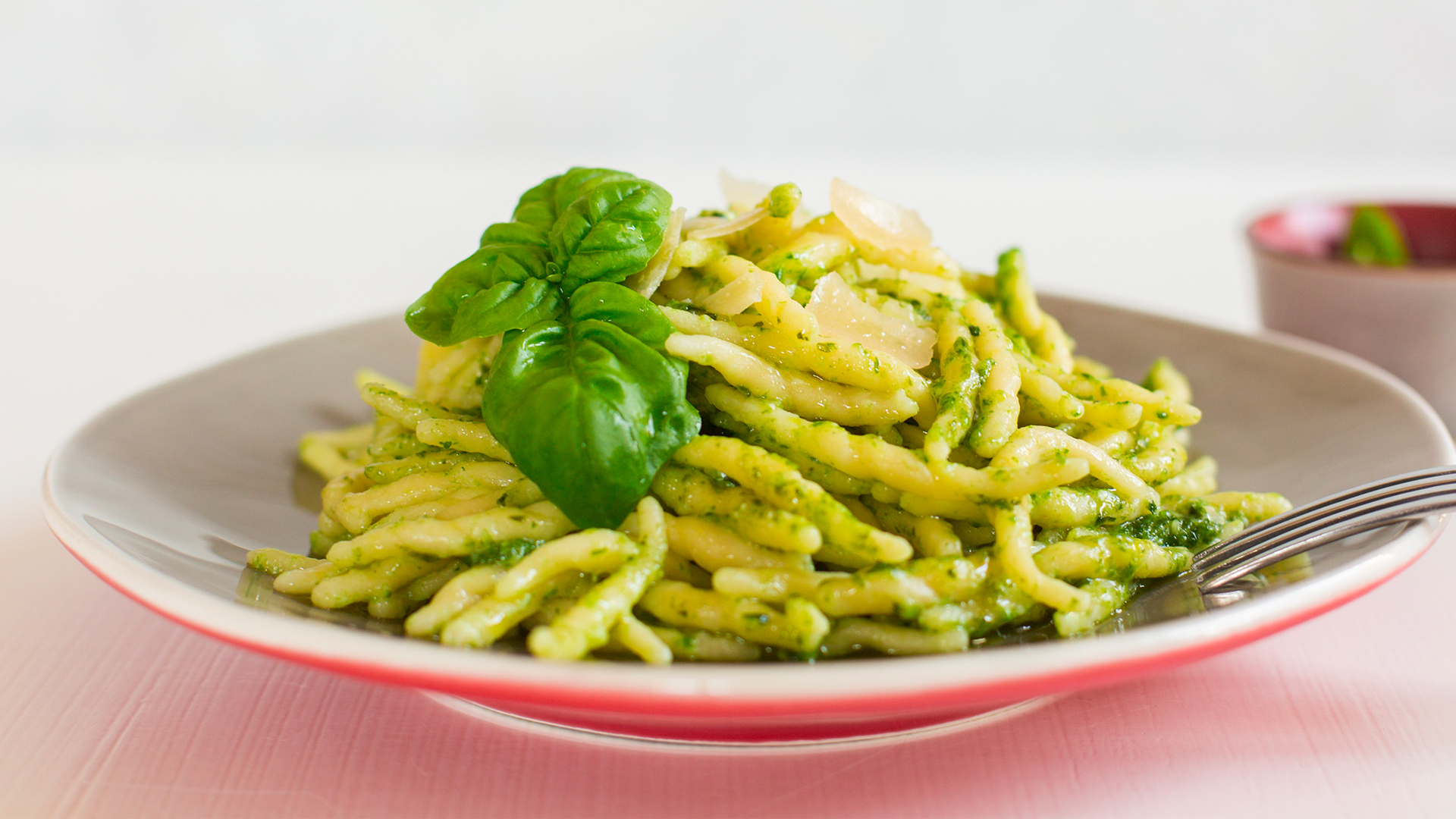
Genovese-style pesto made with basil, garlic, pine nuts, salt, and a hard cheese has received Product of Protected Origin status since 2008. Generically, pesto can refer to any number of ingredients that have been crushed with a mortar and pestle, the traditional way of making pesto. However, most people will immediately think of the bright green Genovese-style pesto that includes garlic. It was first created in the 19th century in Genoa. As a northern Italian dish, it was not particularly well known among the southern Italian immigrants arriving in the United States, and through most of the 20th century, was not widespread. Food writers would occasionally make reference to the Pesto Genovese, but it wasn't until much later in the 1980s and 1990s when "northern" and "authentic" Italian cuisine became popular that pesto became widely known in the United States.
Bagna Càuda
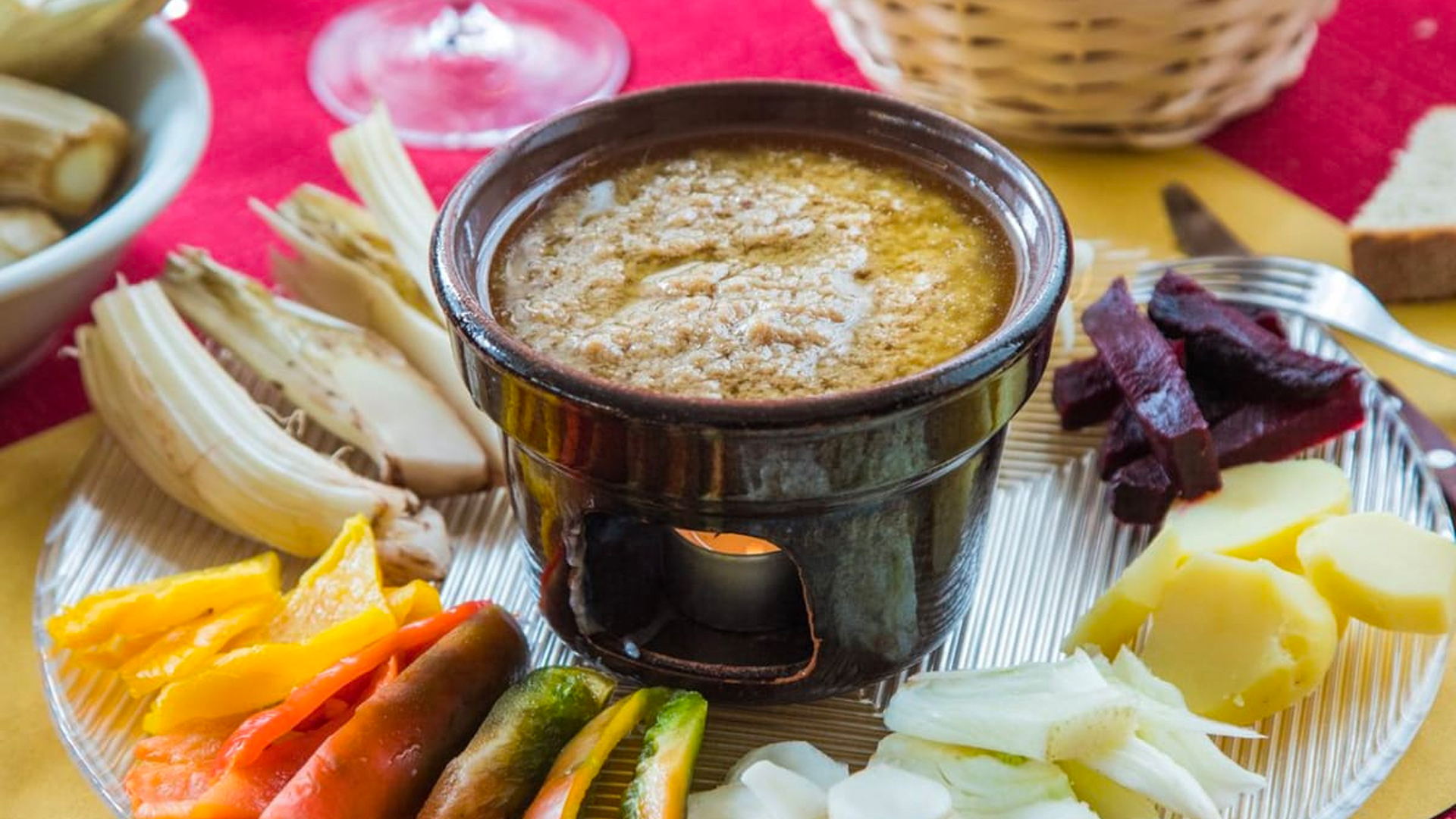
This Italian dip comes from the Piedmont region and is usually served in the autumn as it is seen as a food celebrating the harvest. The two primary ingredients are garlic and anchovies, lightly cooked and then often served with seasonal vegetables. The vegetables can be served raw or cooked. The term translates directly to mean "hot bath," and the sauce is similar to a fondue, although without cheese. Italian immigrants to Argentina have helped make it a popular dish there as well.
Shrimp Scampi
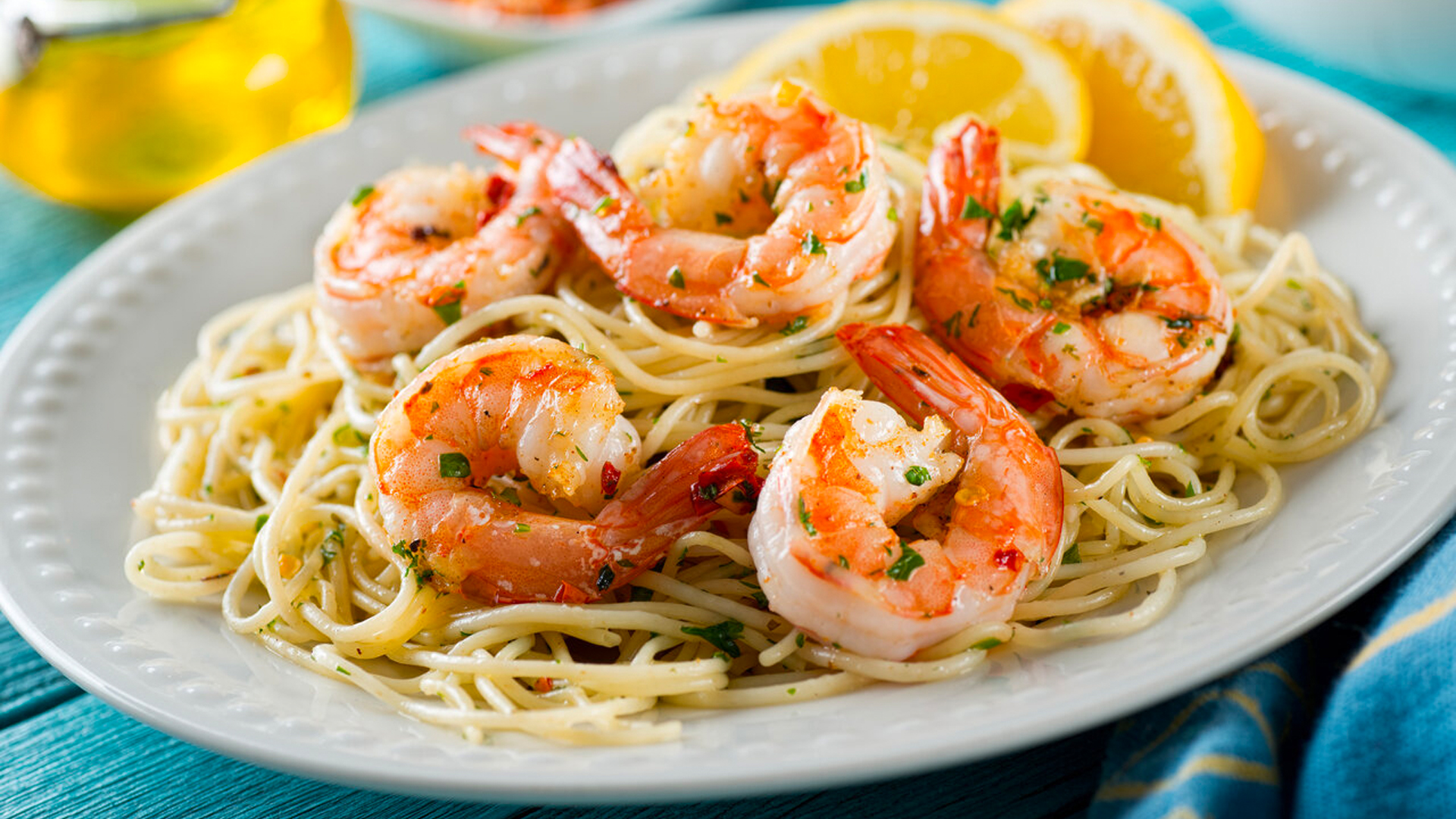
A century ago, scampi was just another word for shrimp, in the same way prawn and langostino refers to the claw-less crustacean. Shrimp Scampi then is sort of like saying "Shrimp shrimp." Scampi, as Italian American restaurants would often list the dish originally, was served with oil and garlic. These were larger than shrimp today, more like European prawns. The dish was so popular that by the 1950s, non-Italian restaurants were beginning to serve it, labeling the dish as shrimp scampi, thus creating the odd linguistic construction. Since then, the idea of shrimp scampi has spiraled out of control. Some versions now add butter or lemon juice or white wine or even tomatoes. Others toss the shrimp over pasta. Pasta with shrimp, oil and garlic is a classic combination often attributed to Genoa. However you eat shrimp scampi, its the garlic that is the star.
Ian MacAllen
Ian MacAllen is America Domani's Senior Correspondent and the author of Red Sauce: How Italian Food Became American. He is a writer, editor, and graphic designer living in Brooklyn. Connect with him at IanMacAllen.com or on Twitter @IanMacAllen.


